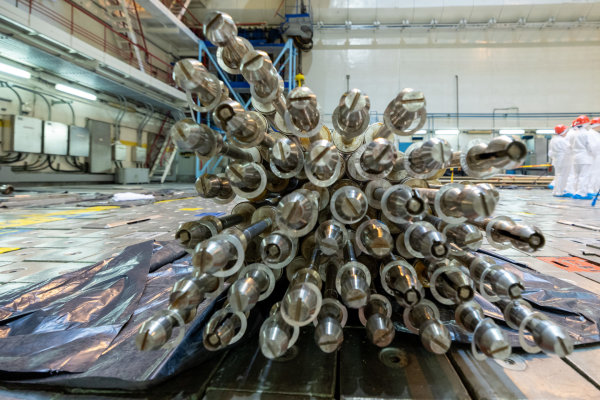40 percent of Ignalina NPP equipment dismantled
2024

As part of the decommissioning of the Ignalina Nuclear Power Plant (INPP), about 40 % of the plant's equipment has been dismantled between 2010 and May of this year, or more than 72,000 tonnes.
In the first four months of this year, 1,446 tonnes have been dismantled, with a total of 5,500 tonnes of equipment scheduled to be dismantled this year.
Approximately 107,000 tonnes of equipment remain to be dismantled by the end of the decommissioning of the plant.
According to Valdas Ledzinskas, head of the INPP's Operational Planning Division, the enterprise will seek to minimise the amount of radioactive waste by planning to apply advanced waste management technologies. In the long term, the plan is to clean up at least 75 % of the radioactive waste from dismantling and 95 % of the reinforced concrete waste from demolition work.
"During the decommissioning process, we will aim to clean as much of the waste generated as possible of radioactive contamination and return it as secondary raw materials. Radioactive waste that cannot be cleaned up to uncontrolled levels must be safely and finally managed by placing it in special disposal facilities," emphasises V. Ledzinskas.
Depending on the class of radioactive waste, there are different ways of handling, storing and disposing of radioactive waste, as well as different types of repositories themselves. For example, short-lived radioactive waste is stored in special facilities on the ground surface - above ground disposal facilities.
Spent nuclear fuel is classified as high-level long-lived radioactive waste due to its high radionuclide content and the long half-life of radioactive particles. It has accumulated over the lifetime of the INPP until its closure.
At present, both reactors and the containment basins no longer contain spent fuel. It has been placed in special containers and placed in two temporary storage facilities on the INPP site, where it will be stored until the deep geological repository is built.
A deep geological repository, which will be the final destination for spent fuel and other long-lived radioactive waste in the future, is the only sustainable and definitive way of dealing with such waste. Although the existing interim storage facilities are designed to store spent fuel and other long-lived radioactive waste for about 50 years, the enterprise is already in the process of selecting a site for a deep repository. To date, 77 potential sites have been identified in 29 Lithuanian municipalities, which will be subject to a comprehensive study and evaluation until 2047. Only after comprehensive and detailed studies and coordination with the public is it foreseen that a final site for a deep geological repository will be selected in 2047.
The deep geological repository is expected to provide a final treatment of over 2,400 tonnes of spent fuel and about 10,000 tonnes of graphite and other long-lived radioactive waste.
Today, one of the INPP's main objectives is to implement the immediate dismantling of the decommissioned plant without leaving future generations with an unreasonable burden of radioactive waste management. The enterprise's mission is to create a clean environment by sustainably managing the legacy of nuclear activities. After decommissioning and dismantling, the plan is to construct and operate a deep geological repository until 2079, during which time it will establish itself as a progressive next-generation company and successfully develop its activities further.

